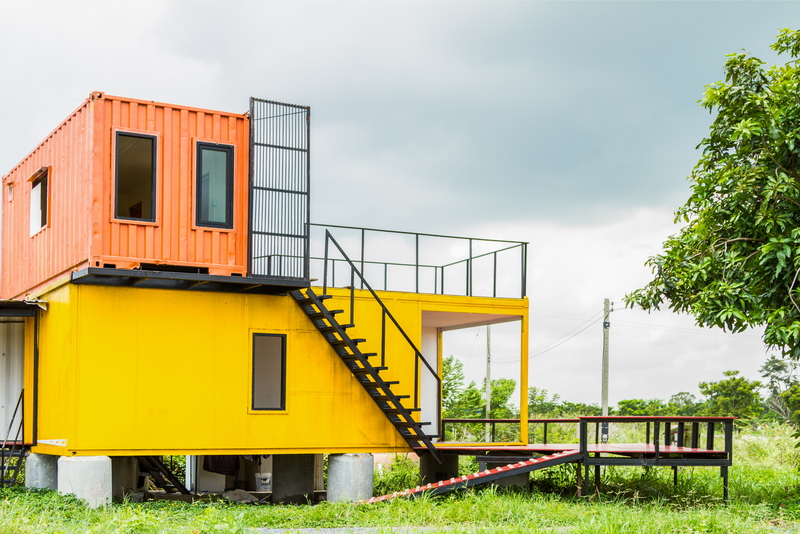
Smart Budgeting Tips for Bulky Waste Removal
Bulky waste removal is a necessity for homeowners, renters, and businesses alike. Common bulky wastes include old furniture, appliances, mattresses, garden debris, and renovation leftovers--items far too large for regular garbage bins. Efficient removal isn't just about clearing space; it's also about managing costs wisely. This article delivers smart budgeting tips for bulky waste removal, helping you save money, stay eco-friendly, and maintain a clutter-free environment.
- Understanding Bulky Waste
- Why Budgeting for Bulky Waste Removal Matters
- Practical and Smart Budgeting Strategies
- How to Reduce Volume and Save Money
- Comparing Bulky Waste Removal Services
- Community and DIY Options
- Eco-Friendly & Cost-Efficient Disposal Methods
- Frequently Asked Questions about Smart Bulky Waste Budgeting
- Conclusion
Understanding Bulky Waste: What Qualifies?
Bulky waste, also known as large or oversized refuse, refers to items that cannot fit in standard trash or recycling bins due to their size or weight. Typical examples include:
- Sofas, chairs, and other large furniture
- Old appliances such as fridges, washing machines, and ovens
- Mattresses and bed frames
- Carpets and rugs
- Garden waste like branches and tree stumps
- Builders' waste, including tiles, bricks, and timber
Recognizing what constitutes bulky waste helps you determine the right removal approach and avoid unnecessary expenses.
Why Smart Budgeting for Bulky Waste Removal Matters
Cost-effective bulky item disposal isn't just about saving money--it's also about maximizing resources, complying with regulations, and ensuring environmental responsibility. Here's why budgeting for large waste removal is vital:
- Prevents unexpected expenses: Knowing the cost of removal services and alternatives can protect your wallet.
- Encourages responsible disposal: Budgeting helps avoid illegal dumping or improper disposal, which often comes with fines.
- Maximizes sustainability: With a plan, you can reuse, recycle, or donate items to reduce environmental impact.
Tip: The average cost for bulky waste disposal varies by location and type of item, ranging from $75 to $500 or more for full-service removal.
Practical and Smart Budgeting Strategies For Bulky Item Removal
1. Set a Clear Bulky Waste Removal Budget
Begin by listing all the items you need to dispose of. Estimate the total volume and weight to get accurate quotes from service providers. Dedicate a realistic budget based on research and prior quotes.
2. Assess Different Removal Options
- Municipal Collection: Many local councils provide free or low-cost collections for residents. Check your city or county's website for schedules and eligibility.
- Private Hauling Services: Companies like 1-800-GOT-JUNK, Junk King, or local operators can remove items quickly. Compare quotes and services.
- Donation Programs: Some charities pick up usable furniture and appliances for free, reducing your disposal costs.
- Skip (Dumpster) Rental: Renting a skip lets you load your own waste at your pace. Rates vary depending on size and duration.
3. Get Multiple Quotes
Never settle for the first price you find. Contact at least three bulky waste removal providers for a range of quotes. Ask specifically about:
- Transportation fees
- Labor and loading charges
- Disposal or landfill fees
- Recycling surcharges (if applicable)
4. Time Your Disposal Strategically
Off-peak removal (outside spring and summer when people often renovate or move) may come with discounts. Schedule your service mid-week or during off-seasons for better rates.
5. Group Items Together
If possible, coordinate with neighbors or nearby friends to dispose of bulky waste together and split the costs. Larger loads are typically cheaper per item when collected in one trip.
6. Factor in Hidden Costs
- Permit fees: Local authorities may require permits for leaving waste or dumpsters on public roads.
- Labor surcharges: Extra costs may apply for stairs or distance to carry items.
- Special handling: Refrigerators and electronics may require eco-friendly disposal and incur extra fees.
How To Reduce Waste Volume and Save Money
One of the smartest ways to cut your bulky item pickup expenses is to reduce the total waste volume before arranging removal. Here's how:
- Break items down: Disassemble furniture or cut up garden waste to fit more into a skip or truck.
- Separate materials: Pull out recyclables like metal, wood, or electronics; these may be accepted free at recycling centers.
- Remove hazardous parts: Extract batteries, oils, or coolants, which need special handling and may increase costs.
- Donate or sell usable items: Platforms like Facebook Marketplace, eBay, or Freecycle can help find your bulky waste a new home.
Tip: Some disposal companies charge by volume while others bill by weight. Breaking down items can make a remarkable difference in price.
Comparing Bulky Waste Removal Services: Costs and Features
Every service offers different pricing structures, features, and coverage. Here's a comparison to help you choose the best large item disposal service for your needs:
| Service | Cost Estimate | Pros | Cons |
|---|---|---|---|
| Municipal Collection | Free to $100 | Low-cost; regulated; responsible disposal | Limited frequency; might have service caps, booking delays |
| Private Hauler | $75 to $600+ | Fast; convenient; handles heavy items | More expensive; price varies by location & volume |
| Skip (Dumpster) Rental | $200 to $500/week | Flexible timing; self-loading; handles big jobs | Labor-intensive; permit may be required |
| Donation Pickup | Free | Reduces waste; helps community; environmentally friendly | Only for usable items; may have long wait times |
Bold budgeting tip: Always check the fine print for weight limitations, item restrictions, and potential surcharges.
Community Options and DIY Bulky Waste Removal
Community-based approaches can save substantial amounts on bulk waste removal costs:
- Neighborhood Waste Events: Many municipalities host community cleanup days or bring-a-bulk-item events where residents can discard large items for free or a nominal fee.
- Tool Libraries & Lending: Borrow a truck or trailer from a neighbor, friend, or lending library to self-haul items to the transfer station, splitting fuel and disposal costs.
- DIY Disposal: Hauling bulky items yourself to local recycling centers or landfills can be significantly cheaper, especially for smaller volumes. Be sure to check hours of operation and required documentation.
Pro Tip: In some areas, transfer stations offer free drop-off for specific bulky goods (such as mattresses) during certain months or environmental campaigns.
Eco-Friendly & Cost-Efficient Disposal Methods
Combining sustainability with smart budgeting for large waste removal is possible with some planning:
- Recycling Programs: Many electronics, metals, and appliances are accepted for recycling at no or low cost at e-waste facilities and scrap yards.
- Repurposing: Upcycle bulky materials into garden planters, pet beds, or home projects, saving on disposal fees.
- Donation / Resale: Local charities, shelters, or schools might accept furniture, appliances, and even building supplies for reuse, reducing landfill impact and costs.
Smart approach: Not only does eco-friendly disposal reduce expenses, but it can also generate tax-deductible donations if you provide receipts.
Frequently Asked Questions about Smart Bulky Waste Budgeting
How often can I schedule bulky waste pickups?
Municipalities usually offer free pickup once or twice a year, while private haulers are available on-demand for a fee.
Is it cheaper to rent a dumpster or hire a hauler?
If you have a large quantity of items and can do the labor yourself, renting a dumpster is usually more cost-effective. For single items or smaller loads, haulers offer convenience at a higher rate.
Are there any items I cannot dispose of with standard bulky waste?
Yes. Hazardous materials, car batteries, paints, chemicals, and tires require special disposal at designated facilities.
Can I offset bulky waste removal costs?
Absolutely! Sell, donate, or recycle items when possible, or share costs with your community to significantly lower your individual expense.
Conclusion: Save Money & Space with Smart Bulky Waste Removal Plans
Planning is the cornerstone of cost-effective, smart bulky waste removal. Start by understanding what needs to go, researching your local options, and budgeting wisely for each step. By separating, breaking down, and donating usable items, you reduce waste, protect the environment, and keep your removal costs manageable. Whether you're a homeowner, tenant, landlord, or business, adopting these smart budgeting strategies for bulky waste removal ensures a cleaner, more organized, and more affordable property.
Don't let large unwanted items stand in your way--or break your budget! Use these expert tips to make bulky waste removal affordable, sustainable, and stress-free.

